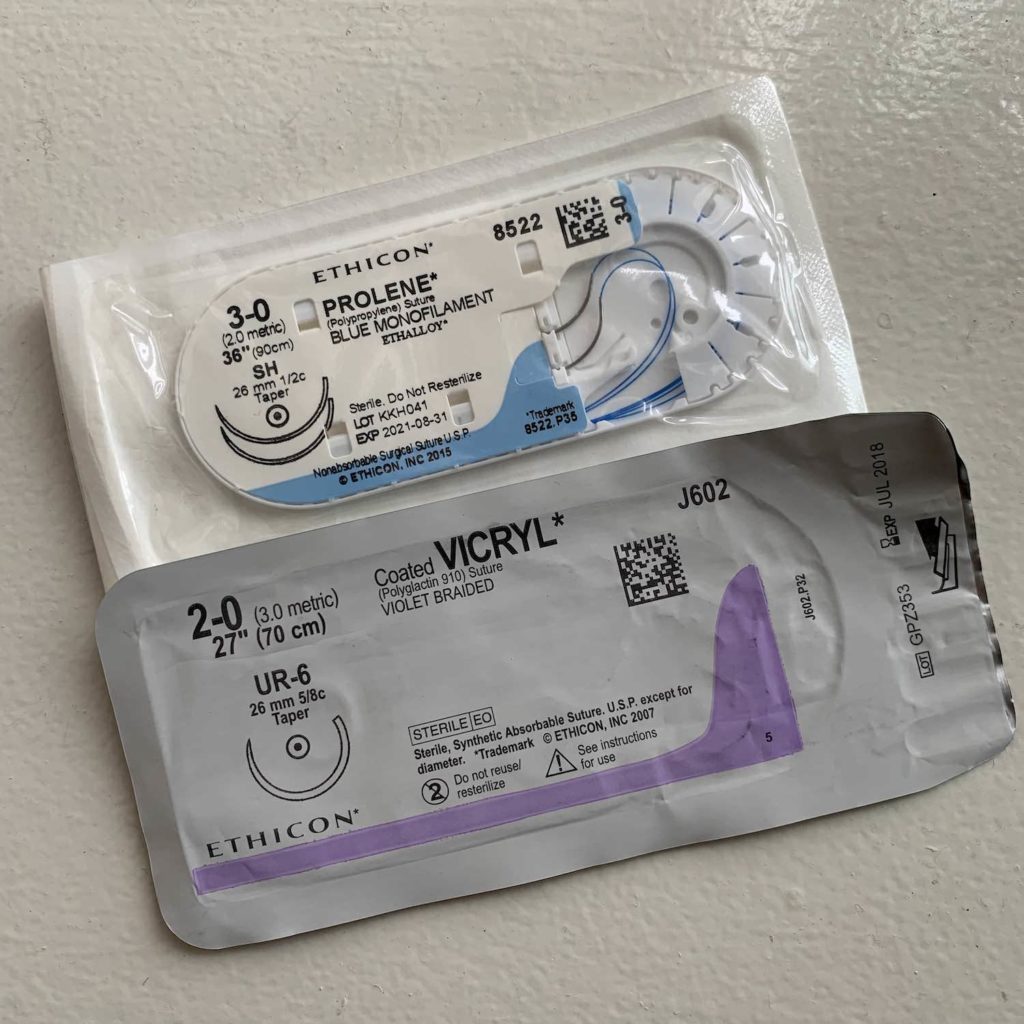Before learning HOW to stitch tissues or tie knots, one must understand the available options so the right decision can be made for a given clinical situation. Absorbable sutures like PDS, vicryl, and chromic gut are degraded through enzymes or simple hydrolysis over several weeks. In the interim, the body will heal the involved tissue. Nonabsorbable sutures like silk, nylon, and stainless steel wires are either left in permanently or removed after several weeks/months.
Suture sizing nomenclature traditionally starts with extremely small diameter #11-0 and gets larger as the number preceding “-0” gets smaller. For example, #4-0 prolene suture used during lung transplant surgery is a thicker suture compared to the aforementioned 1#1-0 monofilaments used in cornea surgery. As the suture gets thicker (#4-0… #3-0… #2-0…), the numbering system changes to #0, #1, #2, #3, #4, and #5. Notice how the “-0” suffix is dropped. Braided #5 sutures, the thickest modern suture, is used often in orthopedic surgery.
Sutures are anchored to needles of varying sizes and shapes ranging from straight needles to those of varying curvatures and even others designed to fit through laparoscopic instruments. Codes like CTX, SH, and CT are all used to describe these shapes.
You can throw great stitches, but unless you tie them down with quality knots, they’re useless. Practice one-handed, two-handed and instrument ties! YouTube is a great place to start (on my channel, I demonstrate one-handed ties). Politely ask OR circulating nurses/scrub techs for expired or unused to practice with!
As always, drop me a comment below with questions!






